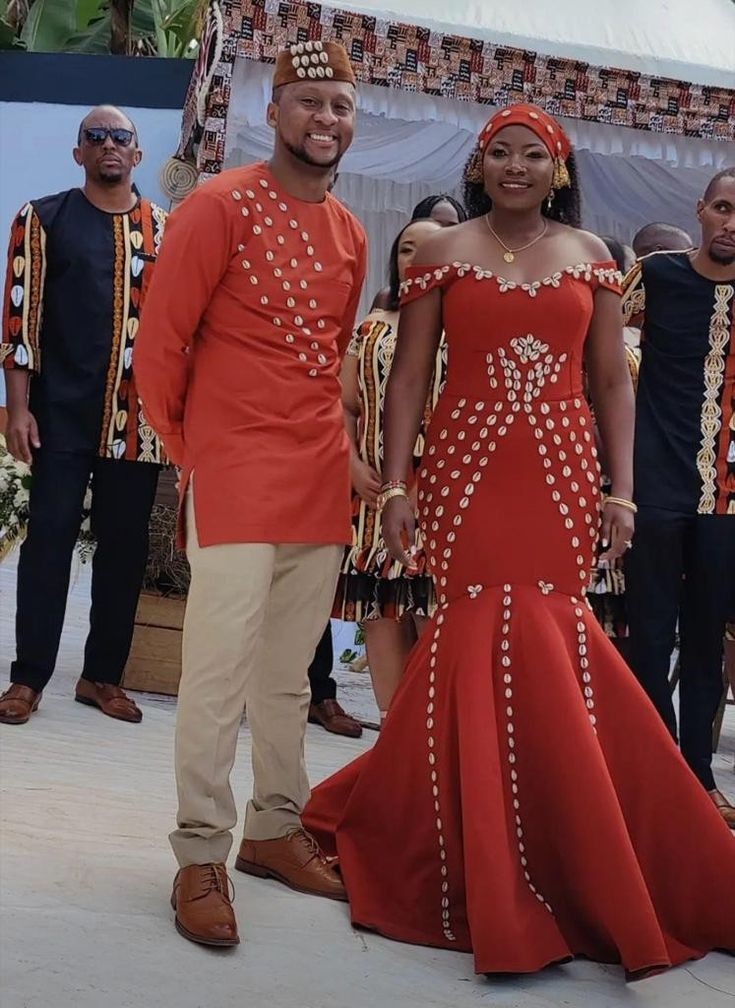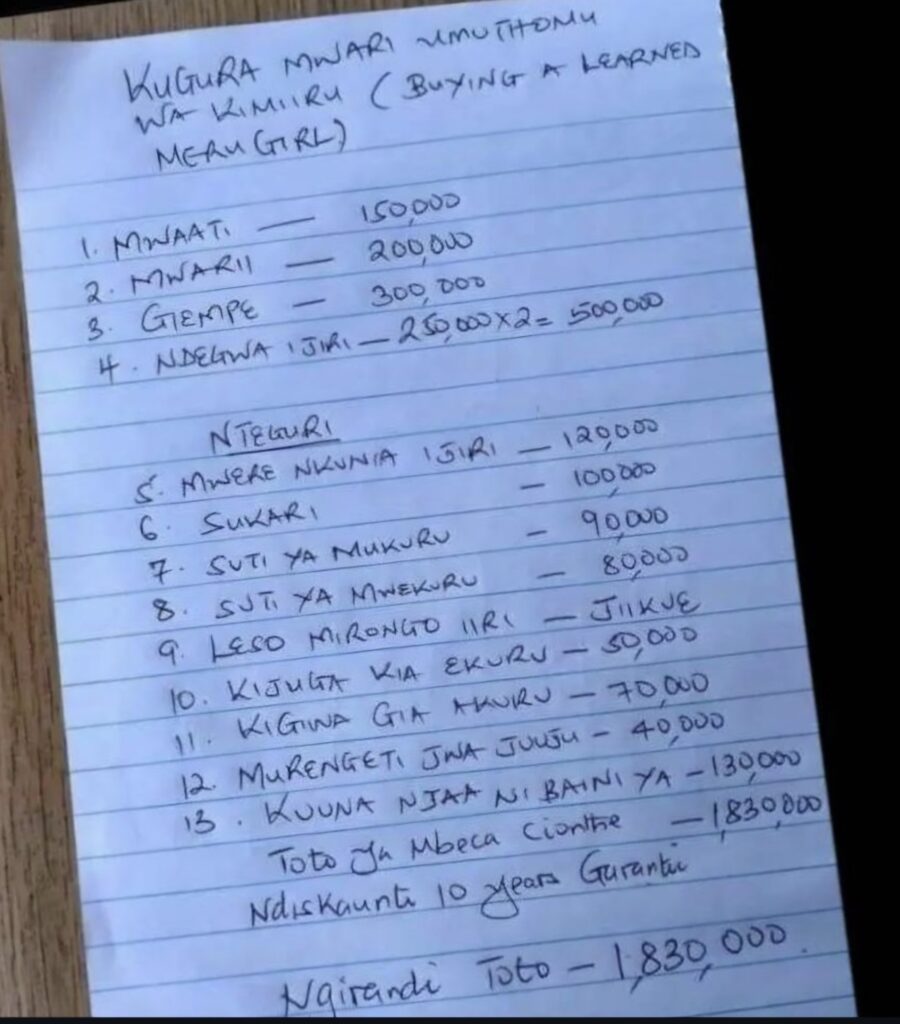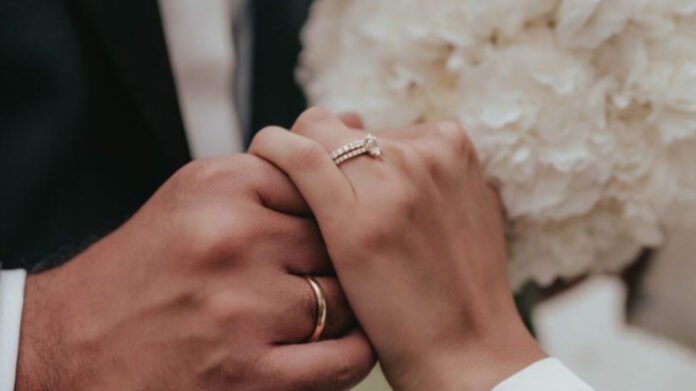In Meru County, the dowry demands, especially for marrying an educated girl, are significant and follow a detailed list that honors tradition. The costs involved, often referred to as “kugura mwari umuthomu wa kimmiru” (buying a learned Meru girl), are steep, reflecting the value placed on education and cultural customs.

The dowry process begins with a financial offering of Ksh 150,000 known as Mwaati, followed by Ksh 200,000 for Mwaarii, which signifies the formal request for marriage. After these initial amounts, the groom is expected to provide Gempe (cattle), valued at Ksh 300,000, as part of the dowry payment.
Additionally, the groom must present two cows, referred to as Ndegwa ijiri, valued at Ksh 500,000 (Ksh 250,000 each). These offerings represent a significant part of the dowry, symbolizing respect and commitment to the bride’s family.
Monetary Contributions
Beyond livestock, monetary contributions are essential. The groom is required to contribute Ksh 120,000 as Mweke nkunia ijiri, a gesture of goodwill. Other financial gifts include Ksh 100,000 for Sukari and Ksh 90,000 for Suti ya Mukuru, which refers to the ceremonial attire worn by elders.
The bride’s grandmother also receives a symbolic gift, known as Suti ya Mwekuru, costing Ksh 80,000. This is followed by a payment for traditional garments, such as Leso mirongo iiri and Kijuga kia Ekuru, valued at Ksh 50,000, which represents cultural respect.
READ ALSO:Vera Sidika Calls Out Kenya Airways for Delays, Urges Followers to Avoid It
Symbolic Items and Additional Costs
As part of the dowry, the groom must also provide Kigiwa gia Akuru (a traditional item), which costs Ksh 70,000, and Murengeti jwa Juuju, an important cultural garment valued at Ksh 40,000. An additional Ksh 130,000 is given to ensure food provisions, a significant part of the dowry meant to support family celebrations.

The total amount for the dowry demands reaches Ksh 1,830,000, which reflects both traditional expectations and the bride’s level of education. This amount can be a daunting figure for many grooms, especially with the additional expectation of providing a 10-year guarantee for the dowry payments.
Meru’s dowry traditions are deeply rooted in cultural values, with a focus on both material and symbolic contributions. However, the rising costs, especially for educated brides, have sparked ongoing conversations within the community about the sustainability of such demands. As tradition meets modern financial realities, families continue to navigate these expectations in the pursuit of marriage.
